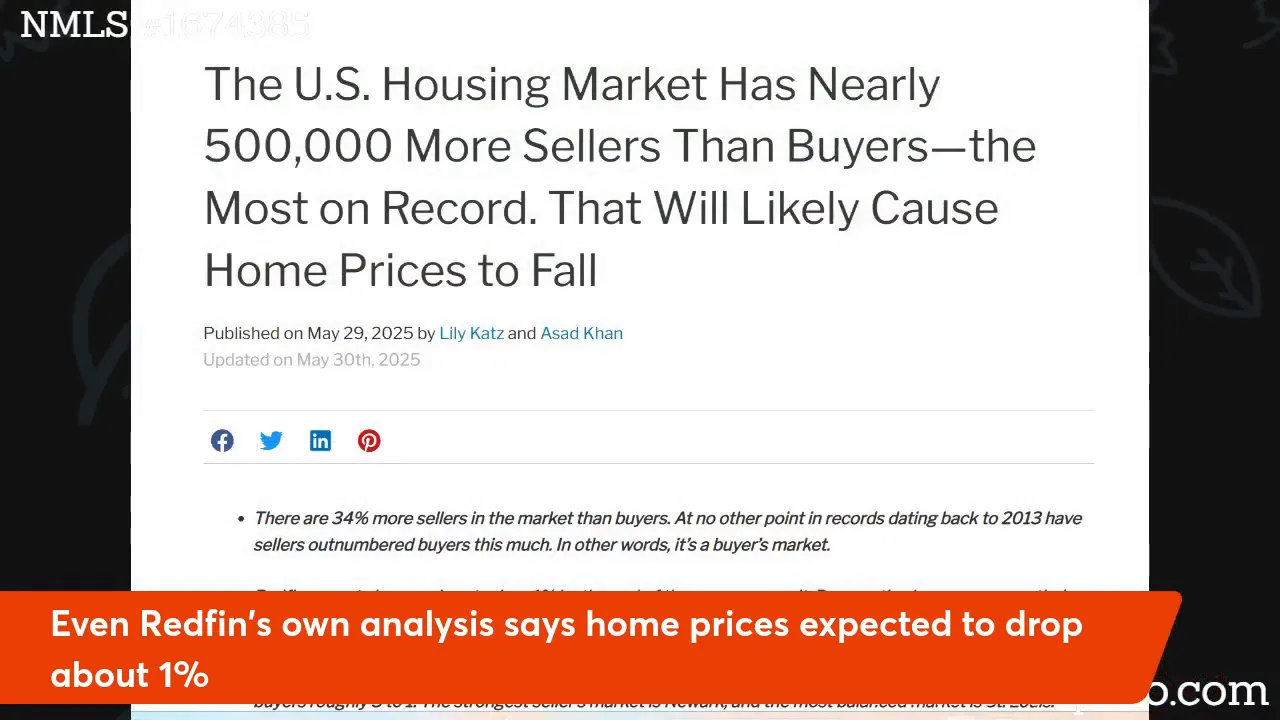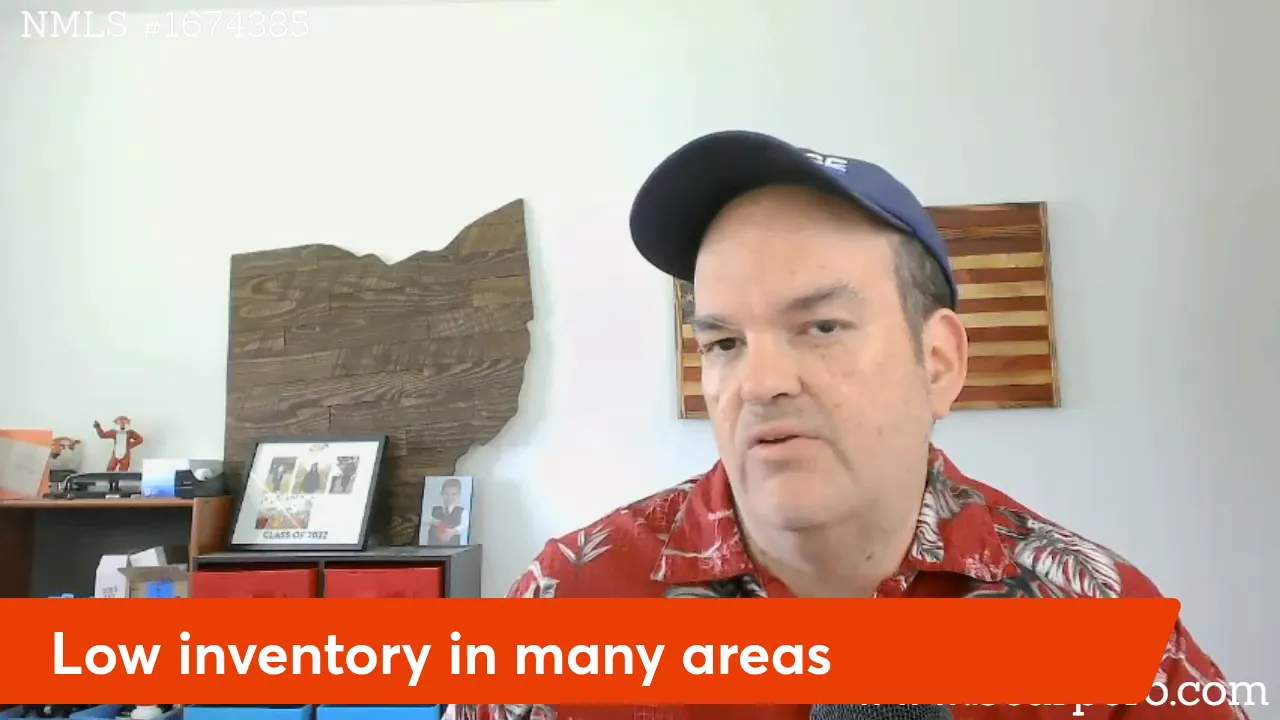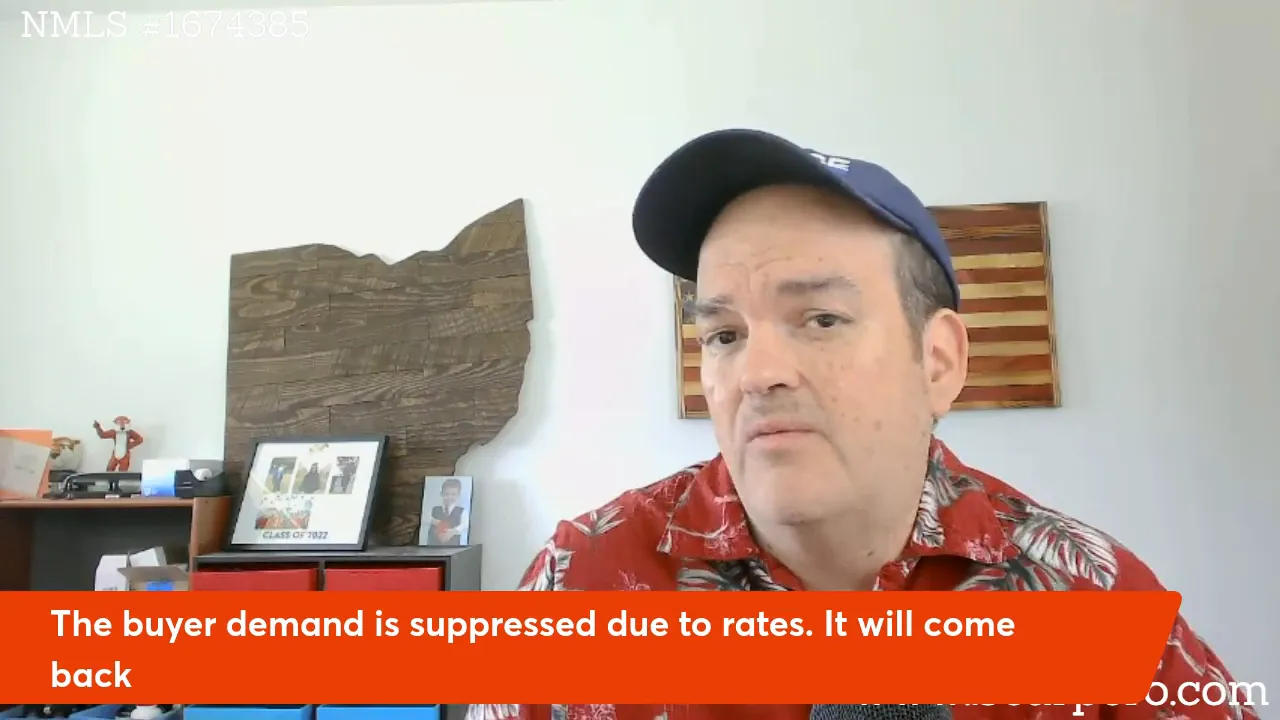
The 6 Most Common Mistakes That VA Homebuyers Make
Template The 6 Most Common Mistakes That First Time VA Homebuyers Make Buying your first home using a VA loan is an exciting milestone, especially
Carlos Scarpero- Mortgage Broker
If you’ve been paying attention to recent housing market news, you’ve probably seen headlines claiming that there are 500,000 more home sellers than buyers on the market. This alarming statistic, originally reported by Redfin, has ignited widespread fears of a looming housing crash. But before you panic or make any big decisions, it’s important to take a closer look at the data and understand what’s really happening behind the scenes.
As a mortgage expert licensed in 33 states and deeply involved in real estate markets across the country, I want to break down these claims and share insights from trusted sources like Realtor.com and the National Association of Realtors (NAR). These organizations provide a much clearer and more accurate picture of the current housing landscape. Let’s dive in.
About a month ago, Redfin released a study that quickly caught the attention of media outlets nationwide. Their headline was clear and alarming: “The U.S. housing market has nearly 500,000 more sellers than buyers, the most on record, which will likely cause home prices to fall.”
This headline alone has caused many potential buyers and sellers to worry about a market crash. But what exactly did Redfin’s numbers say?
According to Redfin, there were 1.99 million sellers currently on the market. They based this figure on active listings from the Multiple Listing Service (MLS), which is the primary database where homes are listed for sale.
Now, here’s where things get interesting. Realtor.com, whose data is recognized and used by the Federal Reserve Economic Data (FRED), also pulls its information from the MLS. However, Realtor.com’s numbers tell a very different story. Instead of nearly 2 million active listings, Realtor.com reports just 959,000 active listings — almost a million fewer than Redfin’s claim.
Even more compelling, the National Association of Realtors (NAR), a long-standing authority on housing market data, conducted its own study and outright rejected Redfin’s findings. NAR’s data shows total existing home inventory at about 1.45 million, which includes homes currently under contract but not yet closed. This number is roughly 500,000 less than Redfin’s estimate.
So, what does this mean? First, it strongly suggests Redfin’s numbers are inflated. Second, it highlights the importance of understanding what “inventory” really means in the housing market. There’s a big difference between active listings available for sale and homes that are simply under contract awaiting closing.
Even if you take Redfin’s numbers at face value, their own analysis predicts only a 1% drop in home prices over the next year. That’s a very minimal correction, not the crash many fear. This small dip is most likely to happen in markets that experienced rapid price increases — sometimes as high as 40% over the past three years.
Other markets may not see any price decline at all. So, even using Redfin’s inflated data, the worst-case scenario is a modest price adjustment rather than a free-fall crash.

One of the biggest misconceptions about real estate is treating the market like the stock market — a single, unified entity that goes up or down uniformly. The truth is, the housing market is highly local.
Regional differences can be dramatic. For example, in the suburbs of Dayton, Ohio, where I live and work, homes priced around $200,000 often sell within a day. Entry-level starter homes are snapped up quickly because inventory is very tight.

Meanwhile, other areas around the country might see slower market activity, which doesn’t mean a crash — it simply means normalization. Some markets are cooling off after a hot streak, creating opportunities for buyers who can negotiate better deals.
Slowing market activity has opened the door for buyers to secure concessions from sellers. These concessions might include the seller covering part or all of the closing costs, which can make a big difference if you don’t have a lot of cash on hand at closing.
For example, I recently closed a deal in Texas where the seller offered $10,000 in concessions towards closing costs. I’ve seen similar opportunities in markets like Pennsylvania. This flexibility is a positive development for buyers, especially those with lower credit scores or VA loans.

Many VA buyers who have been renting for years are now able to take advantage of these market conditions to finally purchase their homes. Seller concessions are often the key to making homeownership affordable for these buyers.
Take the 30 second mortgage quiz to see if you qualify |
| Start The Quiz |
The market slowdown has also created opportunities for renovation loans. In the past two to three years, intense competition and cash offers from real estate flippers made it difficult for buyers using renovation loans to compete. Flippers often close deals in as little as 10 days, while renovation loans typically require 45 to 60 days to close.
Now that sellers are more flexible, buyers have a better chance of using renovation loans to purchase homes that need some work. If you’re considering a renovation loan, this is an excellent time to explore your options.

Higher mortgage rates have suppressed buyer activity somewhat, but the underlying demand remains intact. Demographics continue to favor home buying, and as inflation slows and the economy stabilizes, interest rates are expected to come down.
When rates drop, buyers will return to the market — no ifs, ands, or buts. The long-term fundamentals of housing demand remain solid, so don’t be fooled by short-term fluctuations or sensational headlines.

To sum it all up, the claim that there are 500,000 more sellers than buyers is misleading and based on questionable data. Trusted organizations like Realtor.com and NAR provide a more accurate picture, showing fewer listings and a balanced market.
Even with Redfin’s inflated numbers, the forecast is for only a minor correction in prices, not a crash. The reality is that housing markets are local and diverse — some areas have low inventory and high demand, while others are normalizing.
For buyers, this environment presents new opportunities, including seller concessions, renovation loans, and favorable conditions for VA and low-credit borrowers. Buyer demand is still alive and will return stronger once rates ease.
If you have questions about mortgages, home buying, or renovation loans, feel free to reach out. I’m here to help you navigate the market with confidence and find the best solutions for your needs.
Contact me at 937-572-3713 or visit Scarpero.com to get started.
No. While some reports claim there are 500,000 more sellers than buyers, this data is likely inflated. Trusted sources show a more balanced market, and even the worst-case scenario predicts only a minor price decline of about 1% over the next year.
Inventory numbers vary depending on what’s counted. Some sources only count active listings, while others include homes under contract but not yet closed. Additionally, data collection methods and timing can cause discrepancies.
Absolutely. Slowing market activity has led to more seller concessions, such as paying closing costs, and better chances to use renovation loans. VA buyers and those with lower credit scores are also finding success in this environment.
While the exact timing is uncertain, inflation is slowing, and the economy is stabilizing, which generally leads to lower interest rates. When rates drop, buyer demand is expected to increase.
No. Real estate markets are highly local. Some areas experience low inventory and fast sales, while others may see slower activity. It’s important to look at local market conditions rather than relying on national headlines.

Template The 6 Most Common Mistakes That First Time VA Homebuyers Make Buying your first home using a VA loan is an exciting milestone, especially

500,000 More Home Sellers Than Buyers? Don’t Believe the Hype Table of Contents Key Takeaways Understanding Redfin’s Viral Housing Study Contrasting Data from Realtor.com and

Template Edge Home Finance Is Hiring Loan Officers Table of Contents Key Takeaways Why commission structure matters: keep what you earn True broker relationships, with